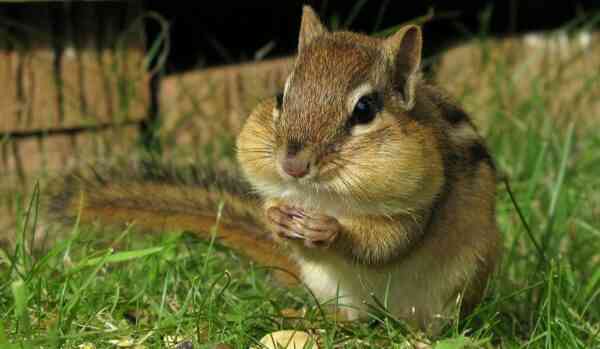Funny and cute chipmunks touch many people. They are sometimes kept as pets, because these rodents are very clean, and it is really interesting to watch them. But in the wild, they fiercely defend their territory and home, not retreating even in front of a obviously much stronger enemy. It’s amazing how so much unbridled courage fits in such a small creature.
Interesting facts about chipmunks
- 25 species of these animals are known. 24 lives in North America.
- A funny feature of chipmunks is their habit of storing food in their mouths, behind their cheeks. If the animal has gained a lot of food, its cheeks swell like two balls.
- The weight of adult chipmunks of the largest species does not exceed 100-120 grams.
- Almost all types of chipmunks are outwardly similar to each other, and it is almost impossible for a non-specialist to distinguish between them.
- These rodents always feel the approach of rain in advance, and hide, as they really do not like to get wet (interesting facts about rain).
- A chipmunk can put up to ten nuts in its mouth at one time.
- They feed mainly on nuts and berries, but they also readily eat insects.
- These animals have been seen stealing more than once. They often drag a variety of inedible trifles into their mink. Why is unclear. They probably just like her.
- A chipmunk pursued by a predator never runs to hide in a hole, so as not to give out the location of the dwelling to the enemy. It usually hides in a windbreak or in trees.
- Usually, chipmunks make much more supplies for the winter than they need. Their resourcefulness is already proverbial. One animal usually stores 2-3 kilograms of food, but does not eat even half during the winter.
- Chipmunks are well adapted to the harsh climate. In Canada, they even live in the subarctic climate zone (interesting facts about Canada).
- They hide the entrance to their burrows so skillfully that finding them is an incredibly difficult task.
- Protecting their reserves, chipmunks do not back down even in front of a large predator or a person, violently attacking and trying to drive away an uninvited guest.
- In its branched hole, which can be up to 2.5-3 meters long, a chipmunk usually arranges a living room, several food stores and several toilet nooks.
- In nature, they live an average of 2-3 years, but in captivity they can live up to 10 years.
- Chipmunks usually hibernate during the winter, but occasionally wake up to eat.
- In the event of sudden, repeated frosts in the spring, a chipmunk may re-hibernate until the weather improves.
- Chipmunks living at home do not hibernate, as they always have plenty of food.
- Often they equip 2-3 minks instead of one, in case the main dwelling is ruined by someone.
- Bears often ruin chipmunks’ burrows, and not to eat their owners – they eat their stocks (interesting facts about bears).
- Chipmunks spend their whole lives alone, driving away relatives if they enter their territory. They are found only in the mating season.
- Pregnancy in these animals lasts about a month, and usually 3-5 cubs are born.
- Little chipmunks spend all their childhood in their mother’s nest, and they begin to go outside much later, when they grow up.
